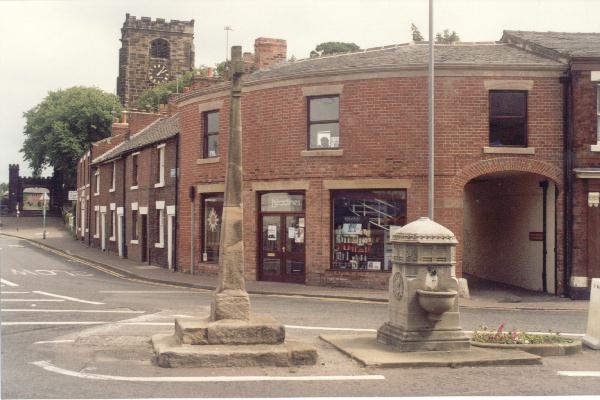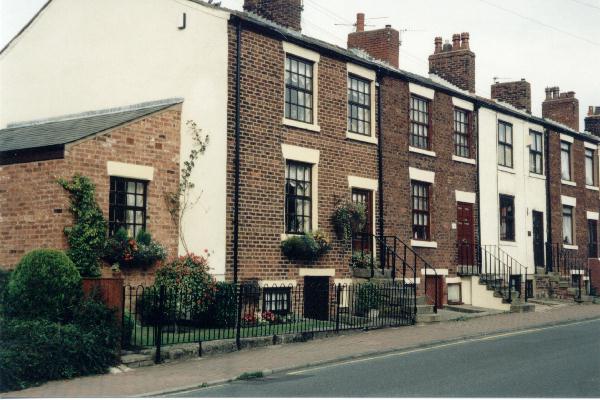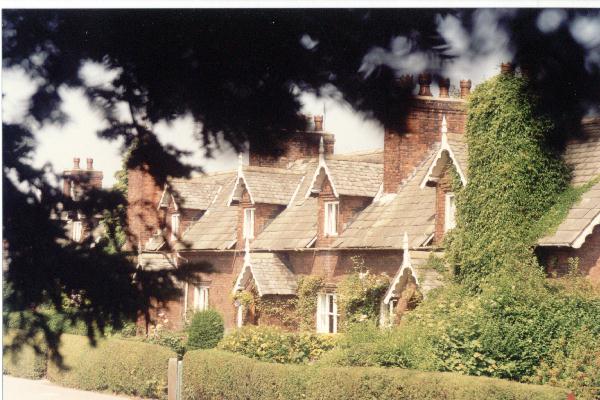|
Historical Leyland II
We began our look at Historical Leyland with the Parish Church. We follow that with a look at the immediate vicinity of the Church
|
| |
Leyland Cross
It's origins are uncertain but it probably dates from medieval times. It was restored in 1887 after lying with a broken shaft from the Puritan times. Next to it is an ornamental fountain. Prior to 1887 there was a water pump in it's place. There must have been a spring or well at this point. Note the archway in the building behind. Probably for stabling. |
 Leyland Cross and Fountain
Leyland Cross and Fountain |
| |
Weaver's CottagesThese Cottages in Union Street (Fox lane)have changed little since they were first built around 1800. They were funded by one of the countries earliest building societies. The land was purchased by George Bretherton of the Bay Horse Inn in 1794. The families lived on the ground and first floor and the cellars were dedicated to weaving looms. As the industry declined aroun 1830, the cellars were sub-let to families. This venture was so successful that another alliance was formed in 1806 to purchase another town field strip for the buiding of a further row of cottages in Bradshaw Street |
 Homes of the Cottage industries
Homes of the Cottage industries |
| |
Alms Houses:
The Almshouses of Leyland have a long history dating back to the seventeenth century. In 1661, William Farington provided six houses allowing the inhabitants six pounds a year for new gowns and twenty shillings every third year. To be eligible they had to be born in Leyland, attend the Parish Church and wear the letter sWF on their coats. The latter was dispensed with in 1781 because of the stigma that it caused. |

Leyland Alms Houses
Taken from the cricket ground. |